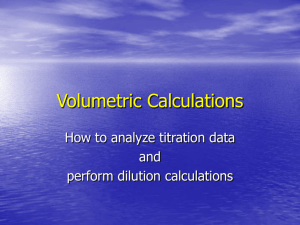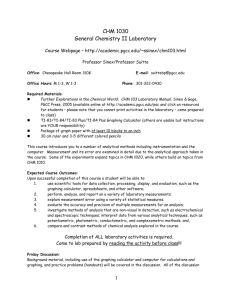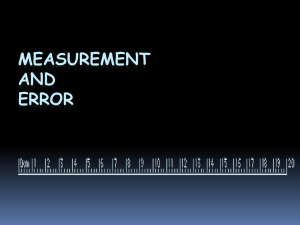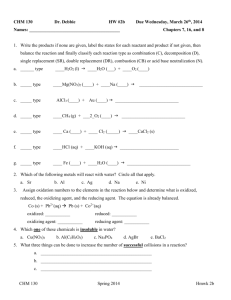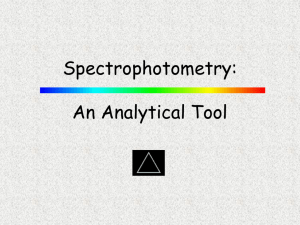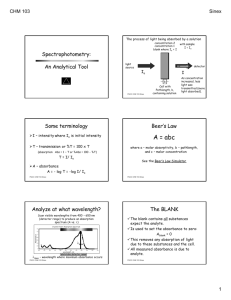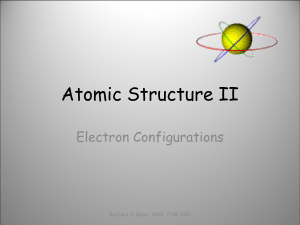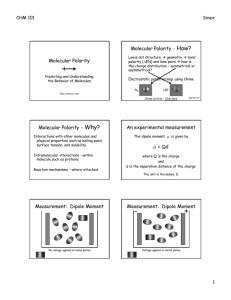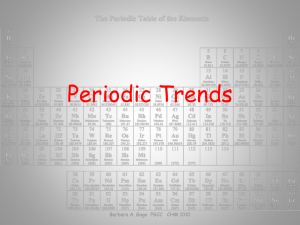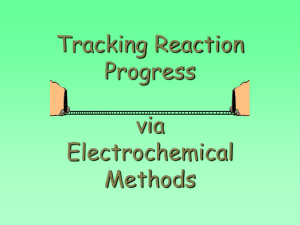Volume Calculations
advertisement
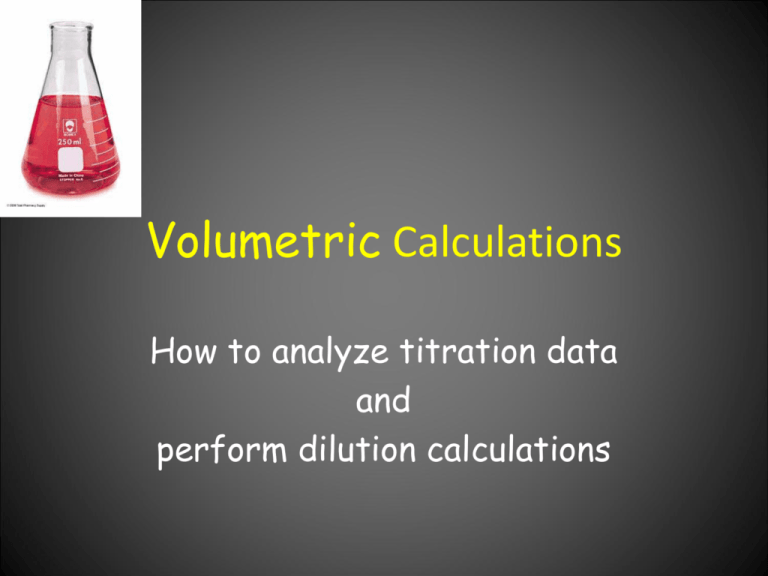
Volumetric Calculations How to analyze titration data and perform dilution calculations Volumetric procedures • Involve the careful measurement of volumes of solutions • Dissolve materials in water and run reaction in solution - titration in Erlenmeyer flask (designed for swirling to mix reactants) • Buret is the measuring device - can read volumes to 0.01 mL • Pipets may also be used, especially to transfer solutions - good to 0.01 mL PGCC CHM 1030 Sinex/Gage Some terminology • • • • • Analyte Substance being analyzed Titrant Solution in the buret Standard solution Solution of known concentration Equivalence point Stoichiometric point End point PGCC CHM 1030 Sinex/Gage At the equivalence point • For a 1-to-1 reaction such as: HCl + NaOH NaCl + H2O mole acid = mole base • moles = molarity x volume in liters • So Macid x Vacid = Mbase x Vbase PGCC CHM 1030 Sinex/Gage What is the end point? • The end point is the point where an indicator changes color. • This is the visual sign to stop or end the titration. If the indicator is selected correctly, the change is at or very near the equivalence point! • Example: phenolphthalein colorless in acid pink in base PGCC CHM 1030 Sinex/Gage Example of Concentration Calculation • A 25.07 mL sample of vinegar is titrated with 37.31 mL of 0.5119 M NaOH. What is the molarity of the acetic acid in vinegar? Moles NaOH = 0.5119 moles/L x 37.31 mL x 1L/1000mL Moles acetic acid = moles NaOH = 0.01910 moles Maa = moles/volume = 0.01910 moles/0.02507 L = 0.7618 M PGCC CHM 103 0Sinex/Gage Calculation of Analyte Mass • A 11.50 g sample of lemon juice is titrated with 0.202M NaOH to determine the mass of the citric acid, a triprotic acid. If it took 36.48 mL of base, what is the mass of C6H8O7? What is the % citric acid by mass? • C6H8O7 + 3 NaOH Na3C6H5O7 + 3 H2O • Mb x Vb = molb 0.202 M x 0.03648 L = 0.00737 mol PGCC CHM 1030 Sinex/Gage Analyte Mass Continued • molb/3 = mola 0.00737/3 = 0.00246 mol • mola x MMa = ga 0.00246 mol x 192.1 g/mol = 0.473 g C6H8O7 • % = (mass C6H8O7/mass sample) x 100 • % = (0.473/11.50) x 100 = 4.11 % C6H8O7 PGCC CHM 1030 Sinex/Gage Back Titration • An indirect analysis for antacids, since they are insoluble • Antacids, which are bases, are reacted with excess acid and this excess acid is titrated with standard base. Antacid + HCl (initial) neutralized antacid + HCl (leftover) HCl (leftover) + NaOH NaCl + H2O PGCC CHM 1030 Sinex/Gage Back Titration Calculation• moles HCl initially = MHCl x VHCl • moles HCl left-over = moles NaOH = MNaOH x VNaOH • mole HCl reacted = moles HCl initially - moles HCl left-over • moles antacids - depends on reaction stoichiometry: CaCO3 + 2HCl CaCl2 + H2O + CO2 PGCC CHM 1030 Sinex/Gage Dilution • Process of adding solvent, usually water, to lower the concentration of a solution • Used to make working Solute is standards for constant. Solvent spectrophotometry is being added. • Used to bring a sample into range for analysis • Typically done using a pipet (TD) and volumetric flask (TC) PGCC CHM 103 0Sinex/Gage Dilution continued • Since the solute is constant, then molesinitial = molesfinal • So the dilution equation becomes Cinit Vinit = Cfinal Vfinal where Vfinal = Vinit + Vwater added PGCC CHM 1030 Sinex/Gage Dilution Calculation Vfinal Cinit • What initial volume of 0.50 M CuSO4 must be used to make 100 mL of 0.025 M CuSO4 solution? Cfinal • Cinit Vinit = Cfinal Vfinal and rearrange • Vinit = Cfinal Vfinal / Cinit =0.025 M x 100 mL/ 0.50 M = 5.0 mL PGCC CHM 1030 Sinex/Gage Dilution continued • A graduated cylinder is a volume measuring device to contain (TC). Could you do a dilution in it? Explain why or why not. • Dilution factor = Vinit/Vfinal 1 mL into 100 mL is a df of 1/100 PGCC CHM 1030 Sinex/Gage Dilution continued • Serial dilution – successive dilutions for large scale dilutions performed in steps A is diluted by 1/100 to B B is diluted by 1/100 to C C is 1/10,000 the concentration of A PGCC CHM 1030 Sinex/Gage
